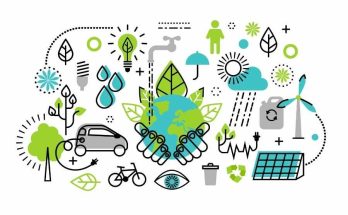By Alejandro Angulo
World Wildlife Day was celebrated on March 3—but what does wildlife mean? Well, we can find different definitions, but, in general, it refers to all plants and non-domesticated animals. Wildlife can be found in all ecosystems such as deserts, forests, tropical forests, plains, and other areas—including the most developed cities—all have different forms of wildlife, although in popular culture, the expression generally refers to animals without contact with humans.
However, according to the United Nations, there are currently billions of people in developed and developing countries who benefit daily from the use of wild species for food, energy, materials, medicine, recreation, inspiration, and many other vital contributions to human well-being. But the accelerating global biodiversity crisis, with a million species of plants and animals threatened with extinction, threatens these gifts of nature to humanity.
In this year 2023, World Wildlife Day is titled: «Partnerships in favor of wildlife conservation» in tribute to all those people who make a difference. However, this year marks the 50th anniversary of the Convention on International Trade in Endangered Species of Wild Fauna and Flora (CITES), which is a convention or international cooperation agreement between governments to ensure that international trade in specimens of wild animals and plants does not constitute a threat to their survival. And today it offers varying degrees of protection to more than 37,000 species of animals and plants.
There are some interesting facts around wildlife such as the following:
• About 50,000 wild species of animals and plants meet the needs of thousands of people around the world.
• One in five people depend on wildlife for food or income, and one in three depend on wood for cooking.
• There are five species that are in danger of extinction: cacti, seaweeds, giraffes, parrots, and oaks.
But it must be mentioned that without the work of numerous non-governmental organizations, small community groups, and environmental activists, many of the wildlife species we know today would probably not exist. Their actions, against multiple challenges, have made a difference in the conservation of numerous plants and animals threatened by human activities.
In Mexico, the General Wildlife Law was decreed in 2000, with the objective of conserving wildlife through its protection and sustainable use. However, since its inception, the emphasis has been placed on the use approach rather than on conservation. As part of this, Management Units for the Conservation of Wildlife (UMAs) were created as a mechanism to contain the use, extraction, or hunting of animals and plants from the natural environment, which at that time was a serious problem (in Mexico too many orchids, cacti, and parrots were taken for the market, and there was also unregulated hunting activity). As of June 30, 2017, the UMAs in the country totaled 1,722 in more than 38.5 million hectares, equivalent to 19% of the national territory. (UMAs for the conservation of wildlife that are registered properties and facilities that operate in accordance with an approved management plan. The properties and facilities in which conservation or conservation and sustainable use are registered in the National System of Management Units for the Conservation of Wildlife according to the type of management under the following categories: management in wildlife and intensive management—Article 24 of the Regulations of the General Wildlife Law, D.O.F. 05/09/2014).
Likewise, the main threats to wildlife include habitat destruction, degradation and/or fragmentation, overexploitation, poaching, pollution, and climate change. And it is estimated that there are 27,000 species of those evaluated at risk of extinction. In addition, the following are also considered as risks for wildlife: agricultural expansion, deforestation, overfishing, urban development, energy use and mining, illegal wildlife trade, pollution, and climate change.
However, there are other activities such as hunting, mass nature tourism, light pollution, traffic or noise, among other human disturbances, that generate stress in animals and can even affect the conservation of species.
On the other hand, institutional capacities have been created, such as the creation of the National Institute of Ecology (currently the National Institute of Ecology and Climate Change, INECC) in 1991, of the National Commission for the Knowledge and Use of Biodiversity (CONABIO) in 1992, and the National Commission for Natural Protected Areas (CONANP) in 2000, among other government agencies; the publication of the lists of species in different risk categories, with their updates, DOF, 1994 and their updates in the years 2001, 2010, and 2015. And, of course, the important official standard on the matter is NOM-059-semarnat 2001 for environmental protection of native species of wild flora and fauna in Mexico, risk categories, and specifications for their inclusion, exclusion, or change, and list of species at risk.
In the same way, there are areas of ecology that must develop useful knowledge for the design of strategies for the conservation of biotic communities and complete ecosystems, with emerging approaches, such as the ecology of complex networks of biotic interactions, ecology of communities and phylogeny, conservation ecology in landscapes modified by human activities, and urban ecology, among others.
As citizens, we can contribute by not extracting, not contaminating, not buying illegal products and by-products from wildlife, and, above all, by not modifying natural ecosystems and wildlife habitats.




